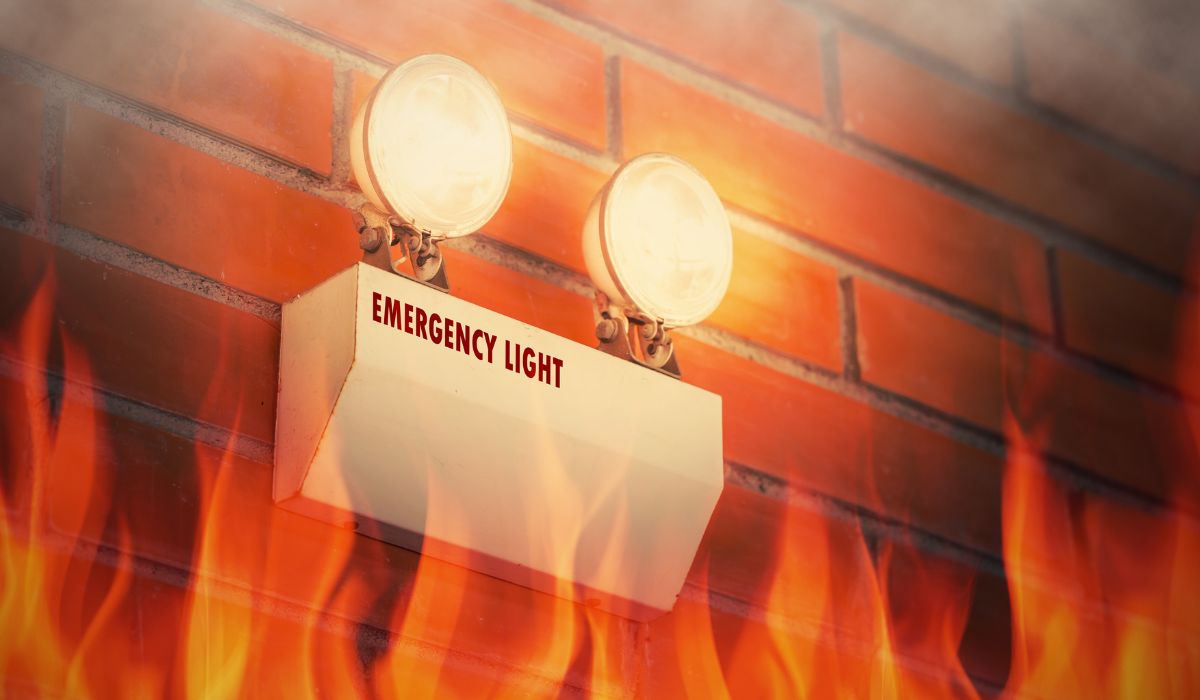What Are Emergency Light Tests & Why They Are Important?
Emergency Light Testing is an essential aspect of fire safety regulations that every business owner and operator should be aware of. These tests ensure that emergency lighting systems are functioning correctly and can provide sufficient light to enable safe evacuation in case of an emergency. Regular testing is a legal requirement and failure to comply can lead to significant fines and legal action. Emergency Light Regulations stipulate that all emergency lights must be tested every six months, with records of testing being kept for at least three years. Don’t put your staff and premises at risk, make sure your emergency lighting is up to standard.
How Often Do Emergency Lights Need to be Tested and What are the Regulations?
Emergency lights are a critical safety feature in any building, ensuring that people can safely evacuate in the event of an emergency. However, to ensure that emergency lights are always functioning correctly, it’s important to regularly test them. According to emergency lighting legislation, the frequency of testing emergency lights should be at least once a year, although more frequent testing may be required in certain circumstances. Legal requirements for lighting tests also specify that all emergency lights must be tested in accordance with the relevant British Standards and that records of testing must be kept for at least three years. By adhering to these regulations, building owners can ensure the safety of their occupants and comply with the law.
What Types of Tests are Used to Test Emergency Light Systems?
Emergency light systems are critical for ensuring safety in any building. To ensure that these systems function properly when they are needed, regular testing is essential. There are various types of tests used to test emergency light systems. Visual inspection of lights is the most basic test, which involves checking that the lights are operational and the batteries are charging. Digital testing of lights involves simulating a power outage to see if the emergency lights are activated. Thermographic surveys use thermal imaging technology to detect any abnormalities in the wiring or batteries. Conducting these tests on a regular basis can help to identify any potential issues and ensure that emergency lights are functioning optimally.
The Right Way to Carry Out an Emergency Lights Test
Carrying out an emergency lights test is essential to ensure the safety of individuals in buildings. However, it’s crucial to conduct the test safely and thoroughly. Start by identifying the emergency lighting system’s components, including lamps and batteries. Next, perform a thorough inspection of the system, checking for any physical damage or signs of wear and tear. Finally, simulate a power outage to test the emergency lights. This will help ensure that the system is functioning correctly and provide sufficient illumination during an emergency. Remember, safety is paramount, so take care to conduct the test with caution and in line with relevant regulations.
Common Problems Found During an Emergency Lights Test & How To Fix Them
Emergency lights are crucial to ensure safety during power outages or any emergency situations. However, it’s common to encounter problems during the emergency lights test, such as faulty bulbs and batteries in the system, worn-out parts, or corroded wiring.
One common issue is the faulty bulbs and batteries in the system, which can cause the lights to flicker or not work at all. To fix this problem, it’s essential to replace the damaged bulbs and batteries with new ones.
Another problem that can occur is worn-out parts or corroded wiring. This can cause the emergency lights to malfunction or not work at all. To resolve this issue, it’s best to hire a professional electrician to inspect and repair the wiring and replace any worn-out parts.
By identifying and fixing these common problems, you can ensure that your emergency lights are functioning correctly when you need them the most. It’s important to perform regular tests to ensure that your emergency lighting system is always in good working order.




